I’m a huge fan of steak (surprise, surprise right?) Interestingly, not all steaks are grilled equally. For example, in this guide for cooking a porterhouse or t-bone I detail the nuances of that cut. Today’s guide however, is all about the reverse searing a tomahawk steak on a gas grill.
While I love the flavor that’s imparted into food from charcoal, gas grills still make up the largest percentage of grill sales. So, doing the reverse sear on a gas grill is something I’m often asked about.
Based on the number of questions I get weekly about grilling steaks on a gas grill, I decided to write this guide to use as a quick reference when I’m asked: “Can I use my gas grill for the reverse sear technique?”
Not only is reverse searing on a gas grill possible, it’s still amazing. When I say possible, I mean possible with the right gas grill.
Jump to RecipeSetting Up A Gas Grill For Reverse Searing
First, not all gas grills can get hot enough to sear and produce the steakhouse quality crust during the searing portion of this technique. I’m using the Kalamazoo drop in gas grill which gets extremely hot, and has a ton of mass. But, this technique applies to any gas grill that gets hot enough.
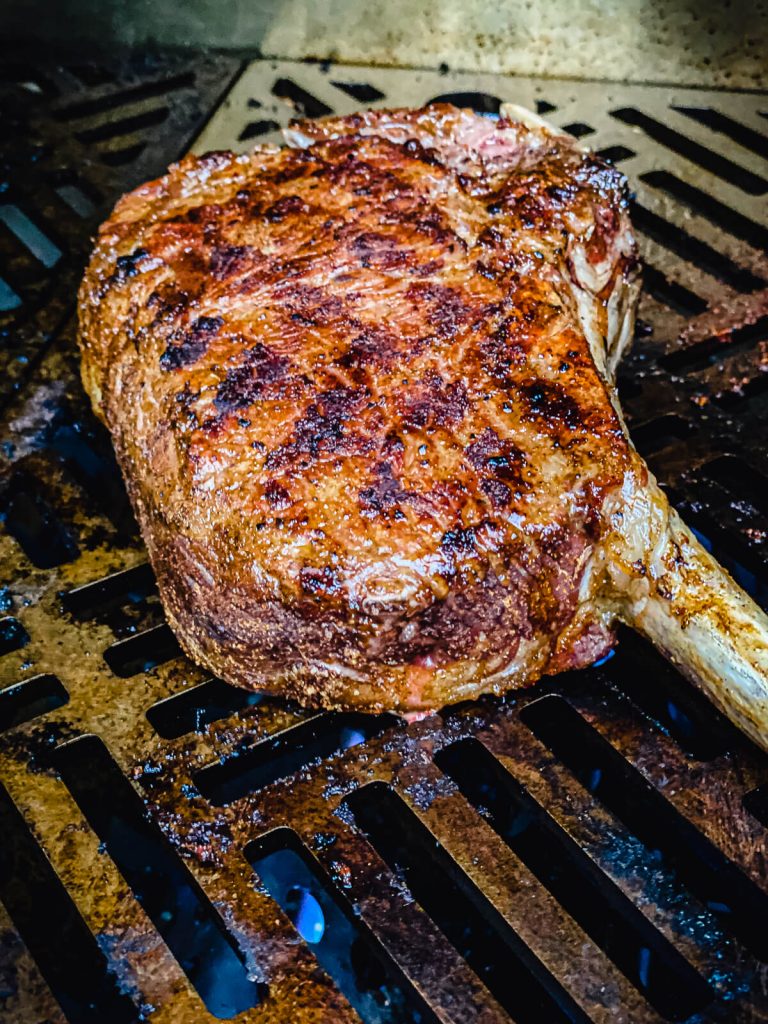
If your gas grill is an el cheapo unit you picked up from the display at the grocery store entrance, it’s likely not going to produce enough heat to properly sear a steak.
Next, doing this technique requires a grill with at least two burners, but I recommend three. You want to set up a two zone heating environment inside the grill. High direct heat on one side of the grill, and low indirect heat on the other side.
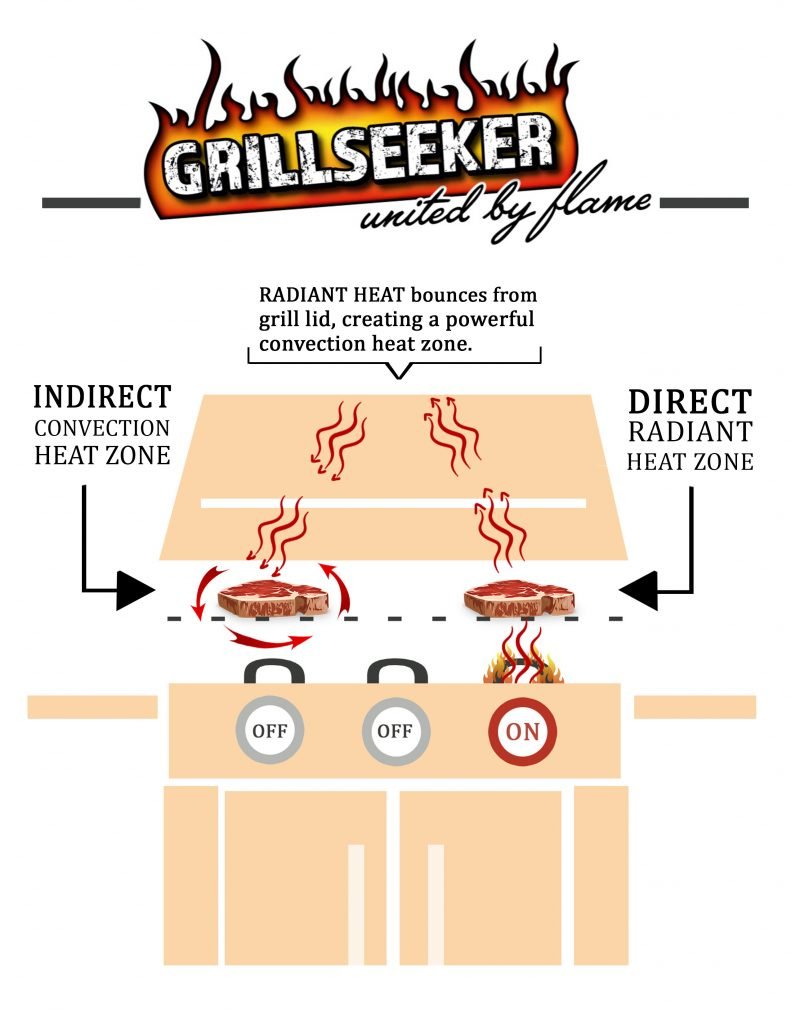
What Temperature Do You Reverse Sear a Steak on a Grill?
For the first part of grilling a steak with the reverse sear method, I recommend keeping your grill’s temperature at 225°F in the indirect heat zone of the grill. At this temperature the meat will cook evenly, without overcooking the outside of the steak.
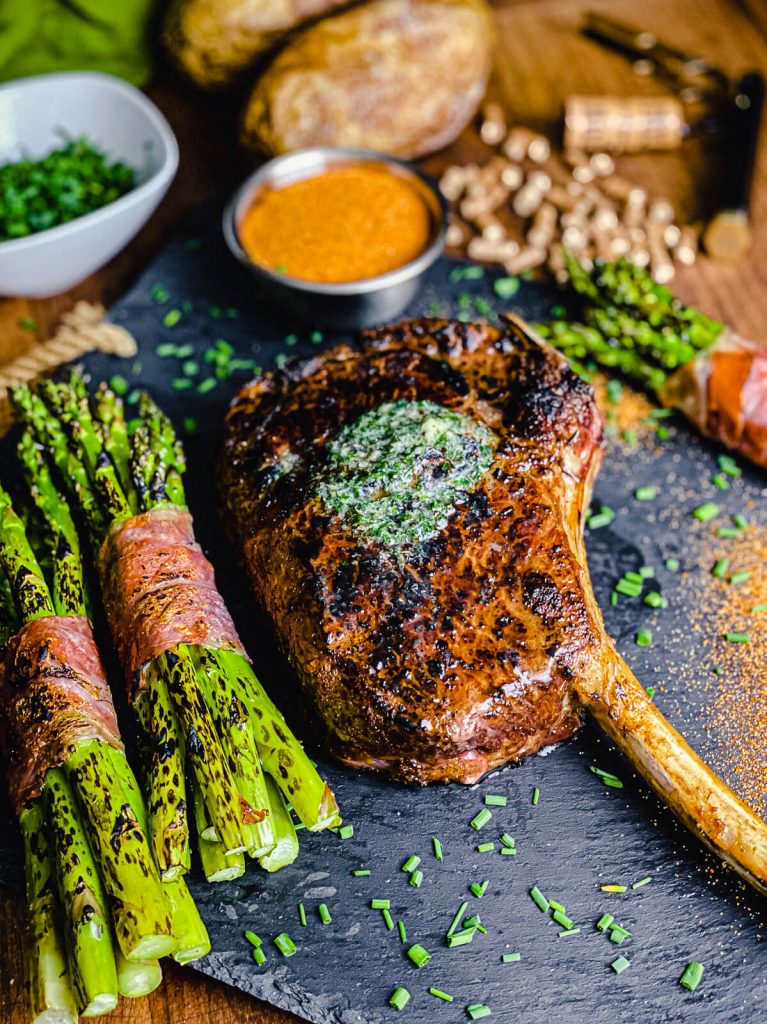
This is an important temperature, you’ll want to monitor it with a reliable leave-in thermometer. Don’t trust your grill’s thermometer. Even if the thermometer in your grill’s lid was accurate, it’s telling you the temperature in the lid, not the temperature where the steak is actually cooking.
The difference between the temperature in the grills lid and the indirect cooking surface can be 50°F or more.
How Long Does It Take To Reverse Sear a Steak on a Grill?
This depends on a few factors, but the biggest is how big the steak is. For the 2.5 pound tomahawk steak I’m grilling for this blog, the total time is about 90 minutes.
How Do You Sear a Steak On a Gas Grill?
This might seem like a silly question, but it’s one I’m asked all the time. There are so many misconceptions about searing a steak, it’s no wonder people are confused about this topic.
First, ensure the grill grate above the direct heat zone on the grill is as hot as possible. You’d be hard pressed to get the grate too hot so put your burners on high or max and let them preheat the grill grate.
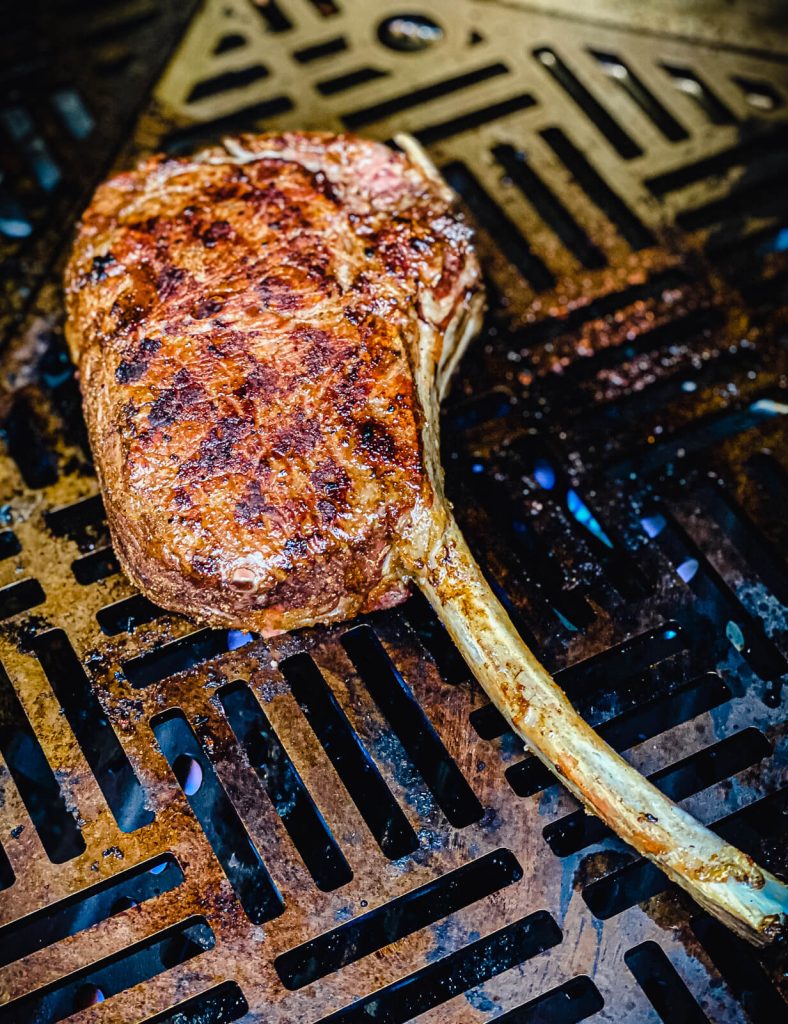
Once the grate is as hot as it’s going to get, simply place the steak on it and let it sear.
This is where the first misconception happens. “Only flip a steak once!” I can’t tell you how many times I’ve heard that, and it’s complete garbage advice. Instead, flip the steak often, and place it onto a new spot on the grill each time.
Long exposure to high heat from “only flipping once” will overcook the steak. So, sear using short, intense blasts of direct heat. Flipping it every 30-60 seconds.
When flipping it, move it around to different spots on the grill grate. When a steak is placed on a hot grill grate, that grate will immediately start to decrease in temperature.
So, flipping it in the same spot doesn’t expose the meat to the hottest grill grate possible. Moving the steak around the grate ensures that every time it’s flipped, it’s coming into contact with the hottest possible surface.
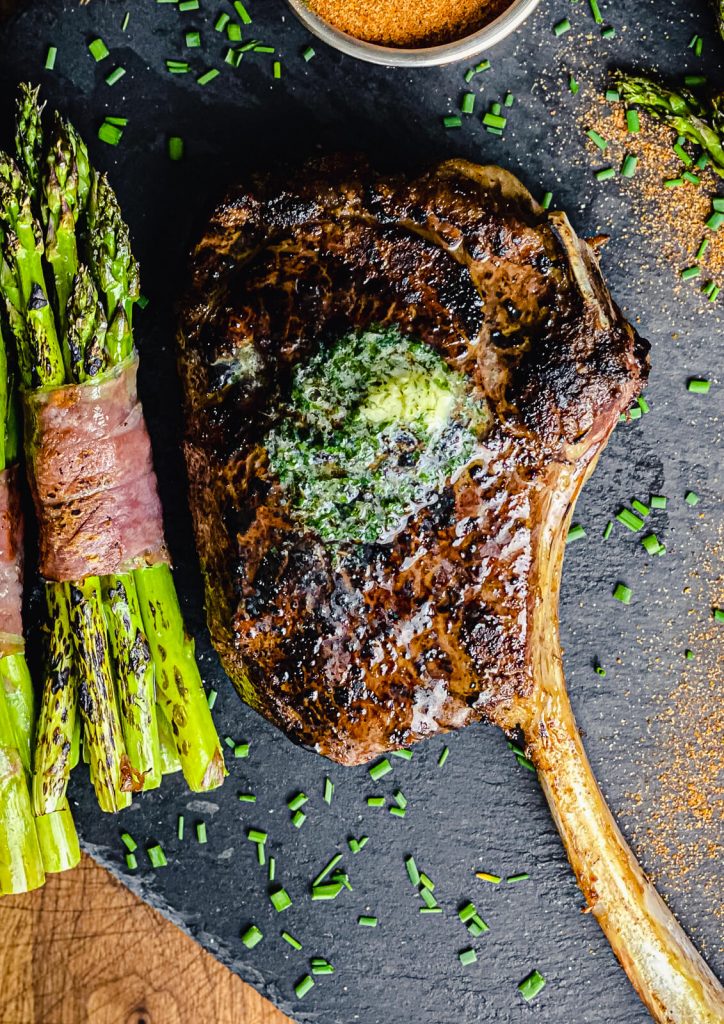
Tips For Reverse Searing On a Gas Grill
- Steak Positioning: The ribeye includes more than one muscle, and the best part of the ribeye is the cap muscle called the ribeye cap. Spinalis dorsi is the technical name but we’ll just call it the cap.
That cap will cook faster than the rest of the steak, so when cooking it indirectly, position the steak so the bone is towards the heat source, and the cap is furthest away. This will help to keep the cap from overcooking. - Preheating: It’s important to let your gas grill preheat before searing. When searing the steak, the idea is to spend as little time over the highest heat possible.
So, after the indirect portion of the cook, remove the steak, and let it rest. While it’s resting, crank all burners to high or max setting, close the lid and let the grill preheat while heat soaking the cooking grate. - Flipping: I feel like a broken record saying this again, but this is so important. Flip your steak often when searing. Every 30-60 seconds you should be flipping the steak when searing.
- Keep It Moving: When flipping the steak, be sure to position it at different spots on the cooking grate. The goal is for the steak to contact the hottest surface possible.
- Grill Marks: Don’t worry with those. Sure they look pretty, but those dark grill marks are flavor, the areas in between are missed opportunities for flavor.
By flipping the steak often and placing it on a different (and hot) spot on the grill grate, you’ll achieve an overall char, which from a flavor perspective is far superior to the sexy grill marks. - Steak Thickness: Thinner cuts of meat don’t benefit from the reverse sear method. Instead, use the multi-flip method for those cuts.
How to Reverse Sear Steak on the Grill
Prep time: 10 minutes | Cook Time: 90 minutes | Serves: 4
Ingredients
2 – 3 lb. Tomahawk Ribeye
1.5 tbsp Favorite steak seasoning
2 tbsp Compound Steak Butter
Step 1: Place the steak on the counter, allowing it to warm up close to room temperature for about an hour.
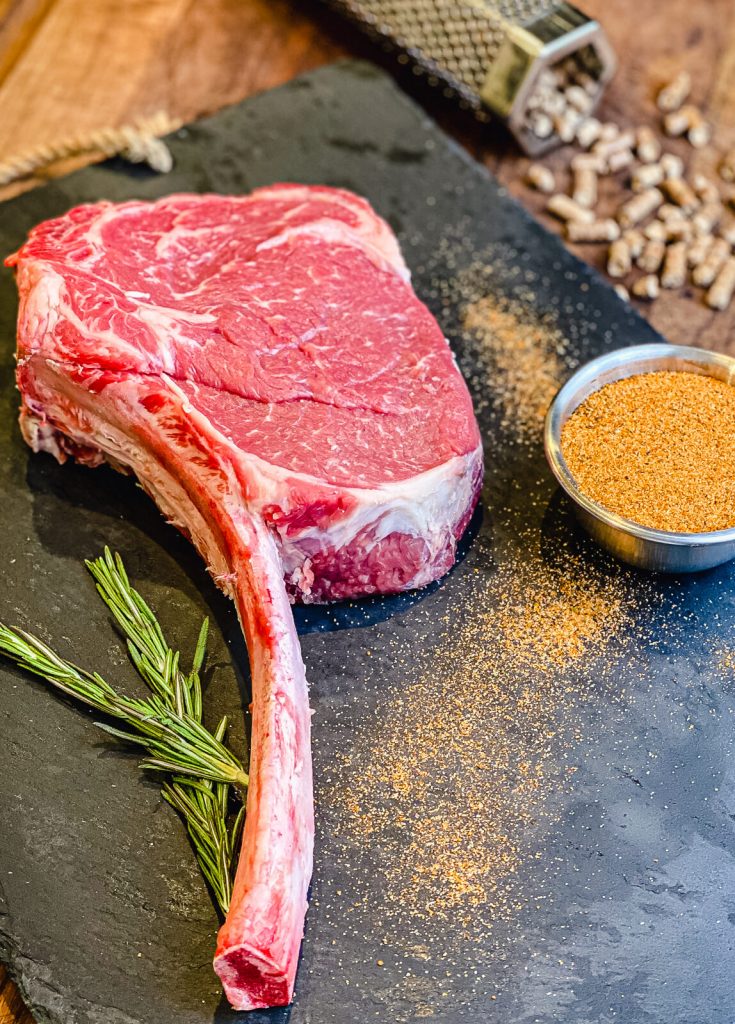
Step 2: Light one burner (far left or far right burner) on your gas grill, and place an optional smoker tube over the active burner. Close the lid and allow the grill to preheat to 225°F.
Step 3: Season your steak liberally with steak rub, and insert a leave-in meat thermometer.
Step 4: Place the steak on the grill over indirect heat, with optional smoker tube and close the lid. Allow the steak to reach an internal temperature of 110°F. Remove the steak from the grill.
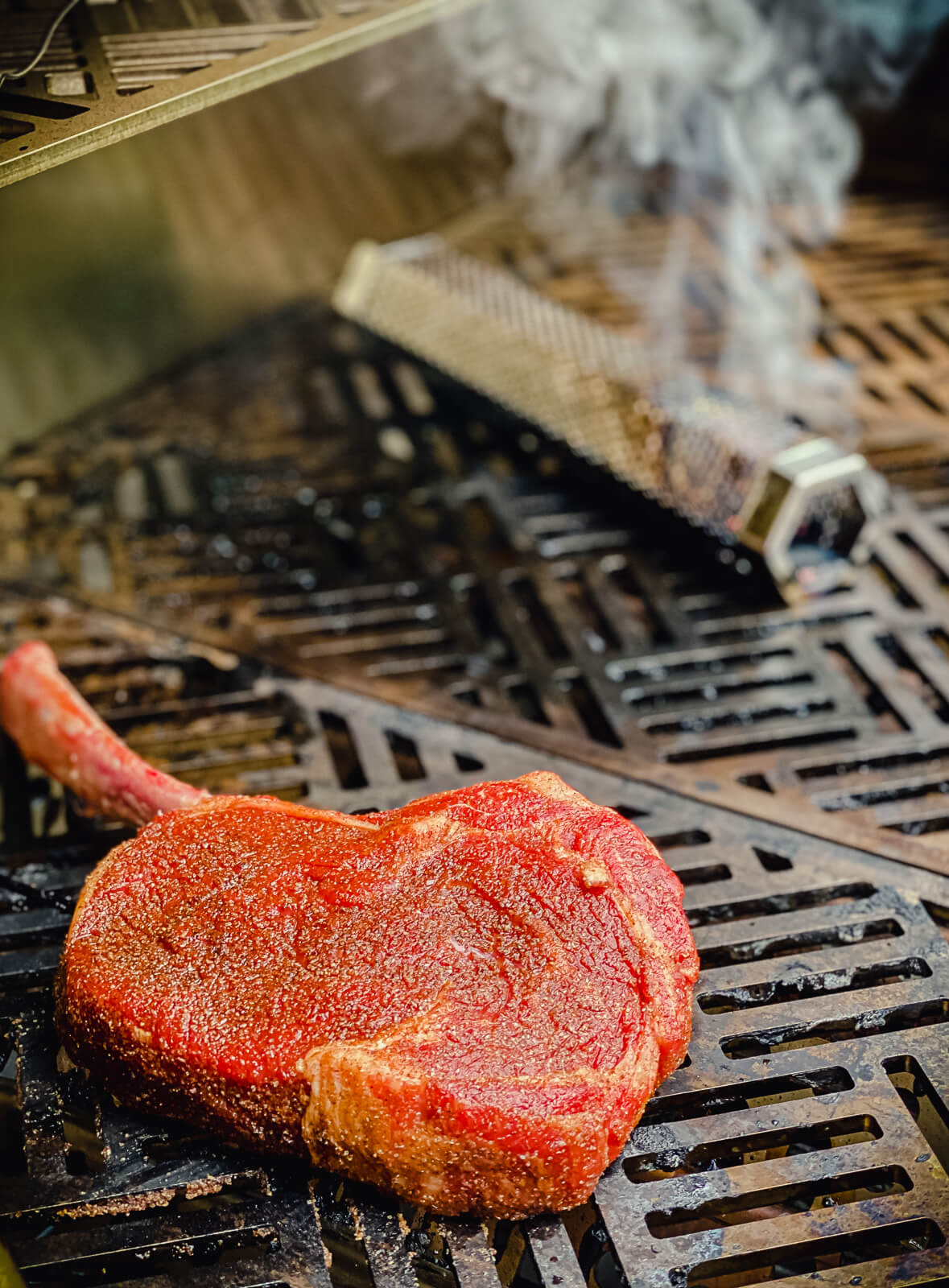
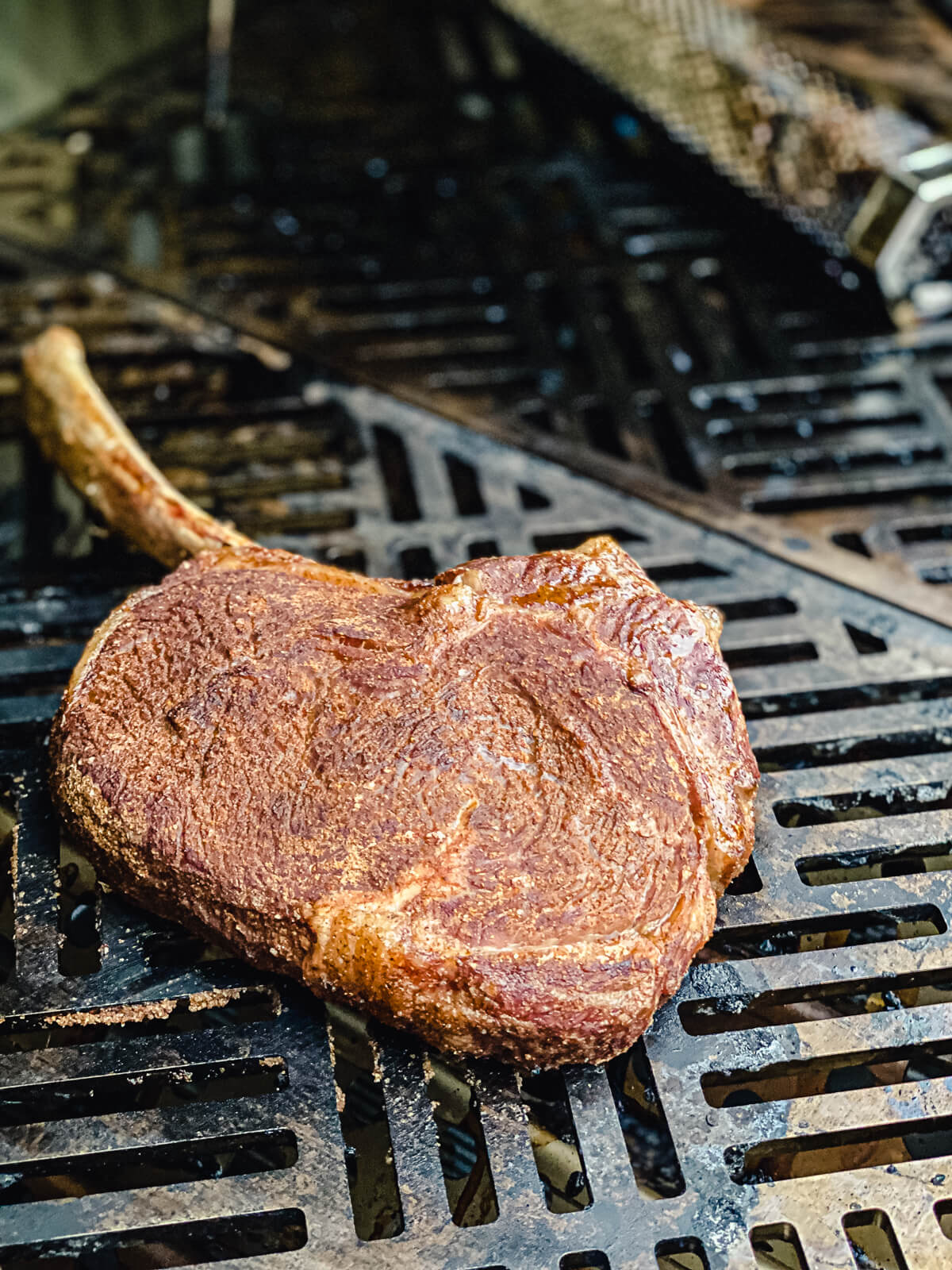
Step 5: Turn all burners on the grill to high or max and close the lid. Allow the grill to get as hot as possible for ten minutes, heat soaking the grill grates.
Step 6: Place the steak on the grill grate over direct heat. Leaving the lid open, flip the steak every 30-60 seconds, positioning it in a new spot on the grate every time. Continue flipping and repositioning the steak for 5-7 minutes, or until you have achieved the desired crust.
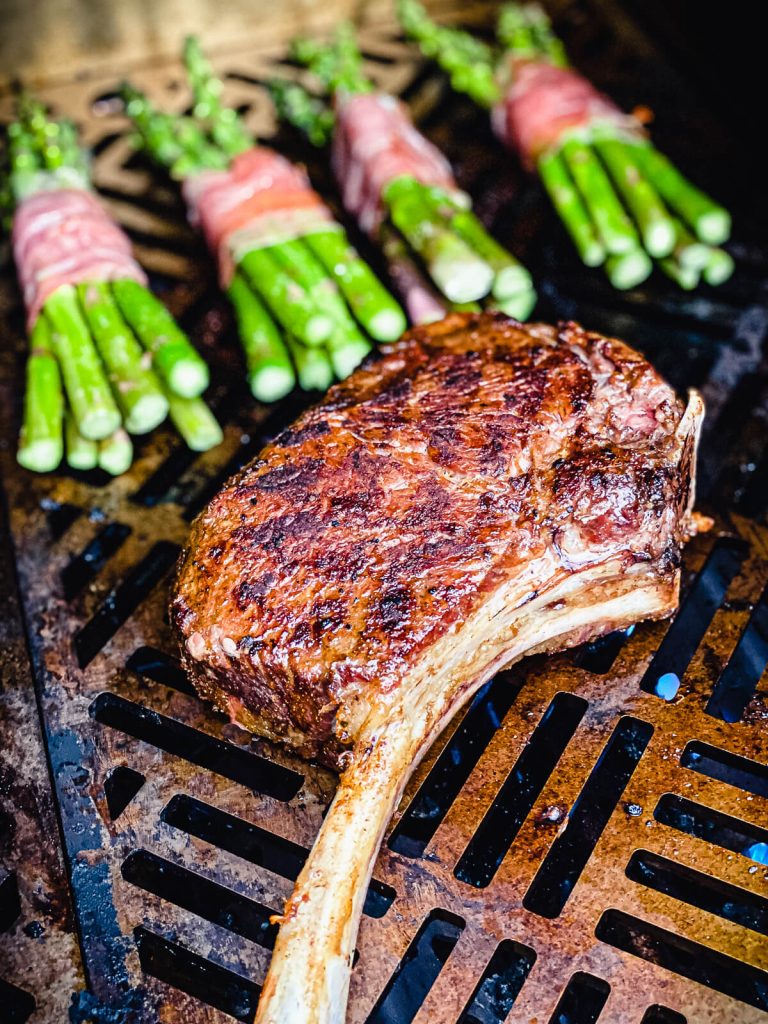
Internal temp will be about 125°F at this point. Perfect for a medium rare steak. Of course you can grill it longer if you prefer a more medium steak.
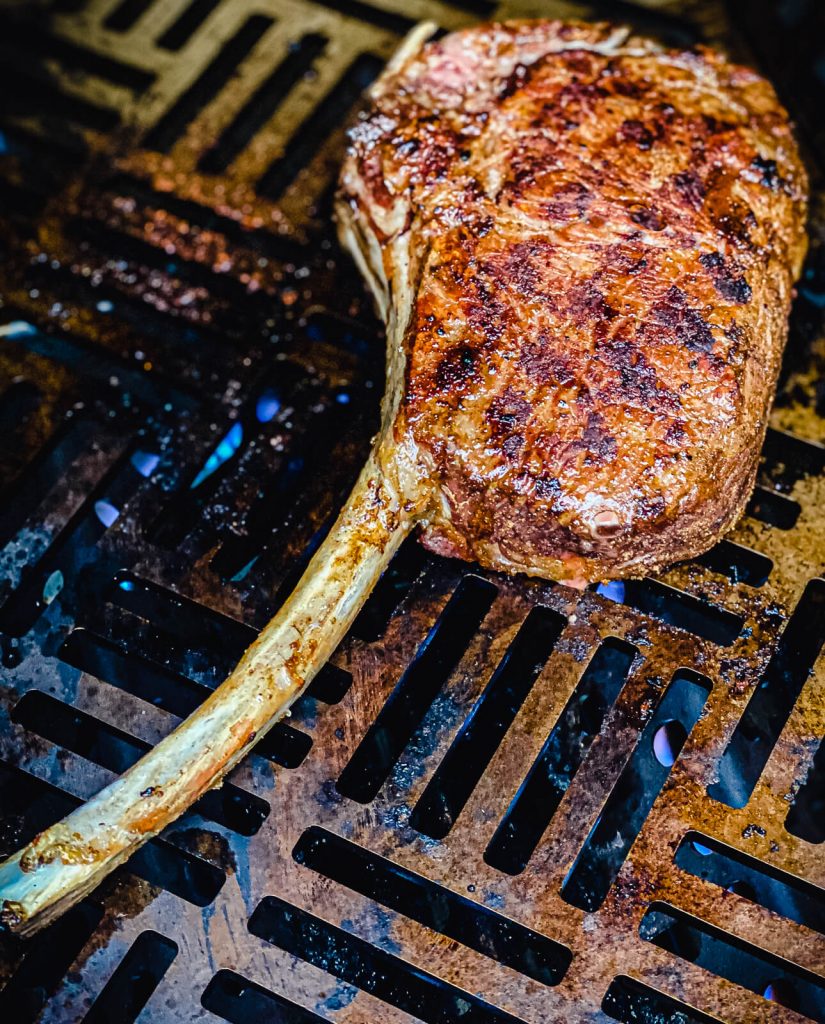
Step 7: Remove the steak, top with optional (but highly recommended steak butter) and serve.
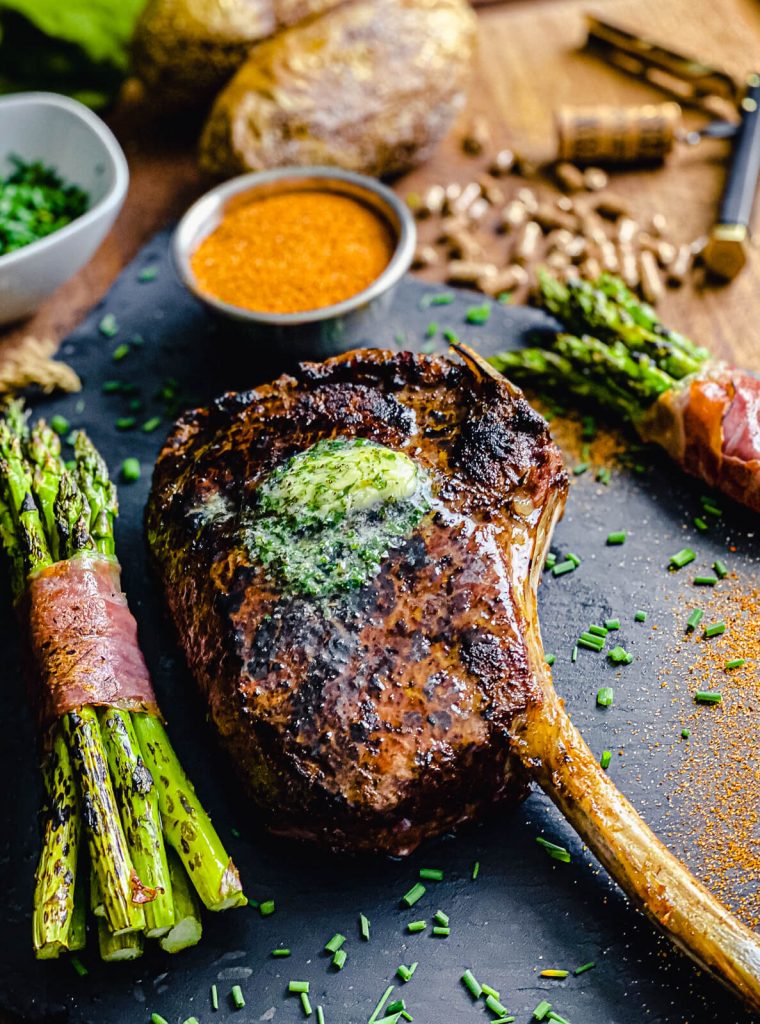
I love to serve this with grilled veggies. Grilled asparagus is great, but consider some spicy grilled baby bok choy as well.
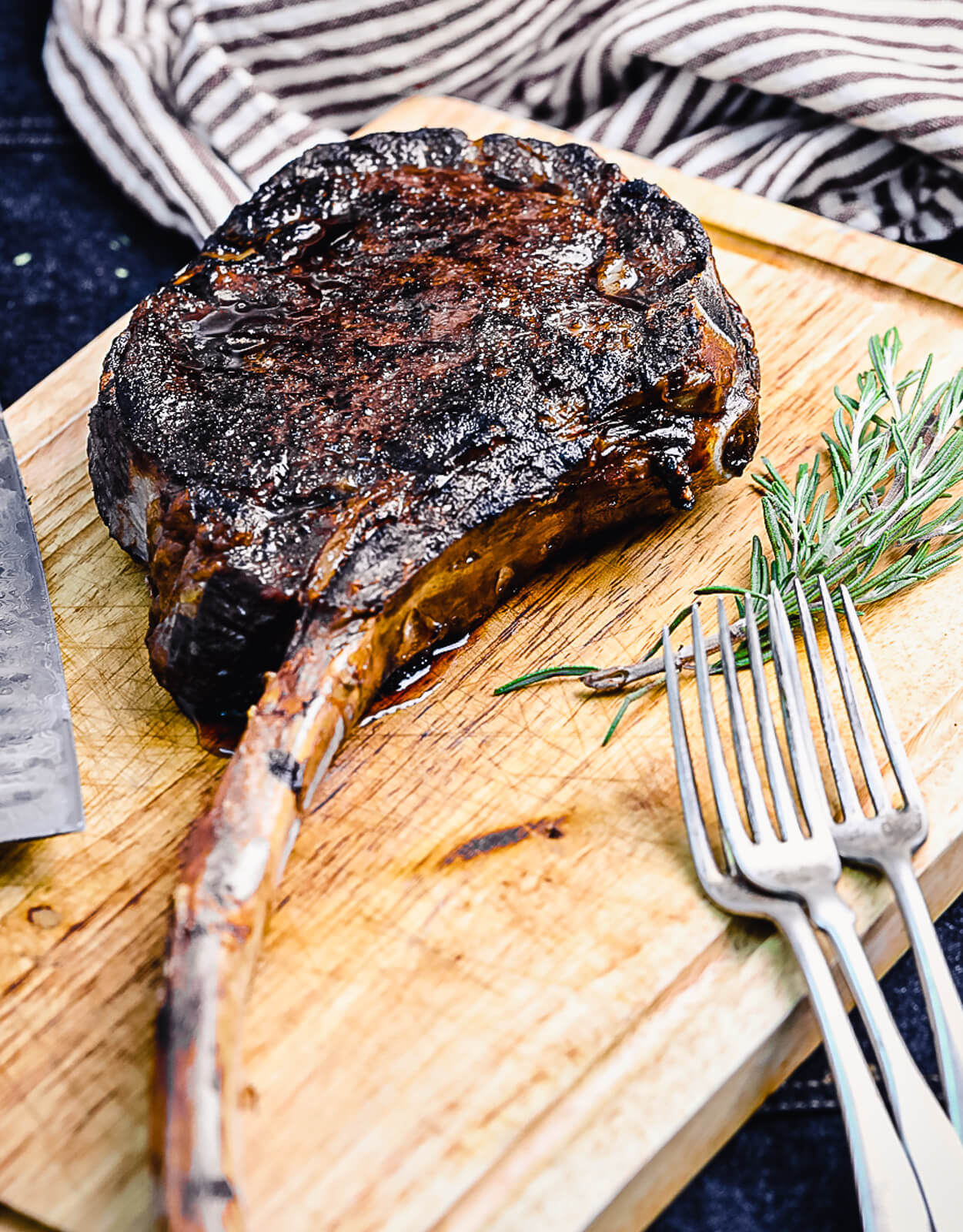
Ingredients
- 2-3 lb. Tomahawk ribeye
- 1½ tbsp favorite steak seasoning
- 3 tbsp steak butter
Instructions
- Allow steak to sit out at room temperature for one hour.
- Light one burner (far left or far right burner) on your gas grill, and place an optional smoker tube over the active burner. Close the lid and allow the grill to preheat to 225°F.
- Season your steak liberally with steak rub, and insert a leave-in meat thermometer.
- Place the steak on the grill over indirect heat, close the lid and allow the steak to reach an internal temperature of 110°F. Remove the steak from the grill.
- Turn all burners on the grill to high or max and close the lid. Allow the grill to get as hot as possible for ten minutes, heat soaking the grill grates.
- Place the steak on the grill grate over direct heat. Flip the steak every 30-60 seconds, positioning it in a new spot on the grate every time. Continue flipping and repositioning the steak for 5-7 minutes, or until you have achieved the desired crust.
- Remove steak, and top with butter for serving.


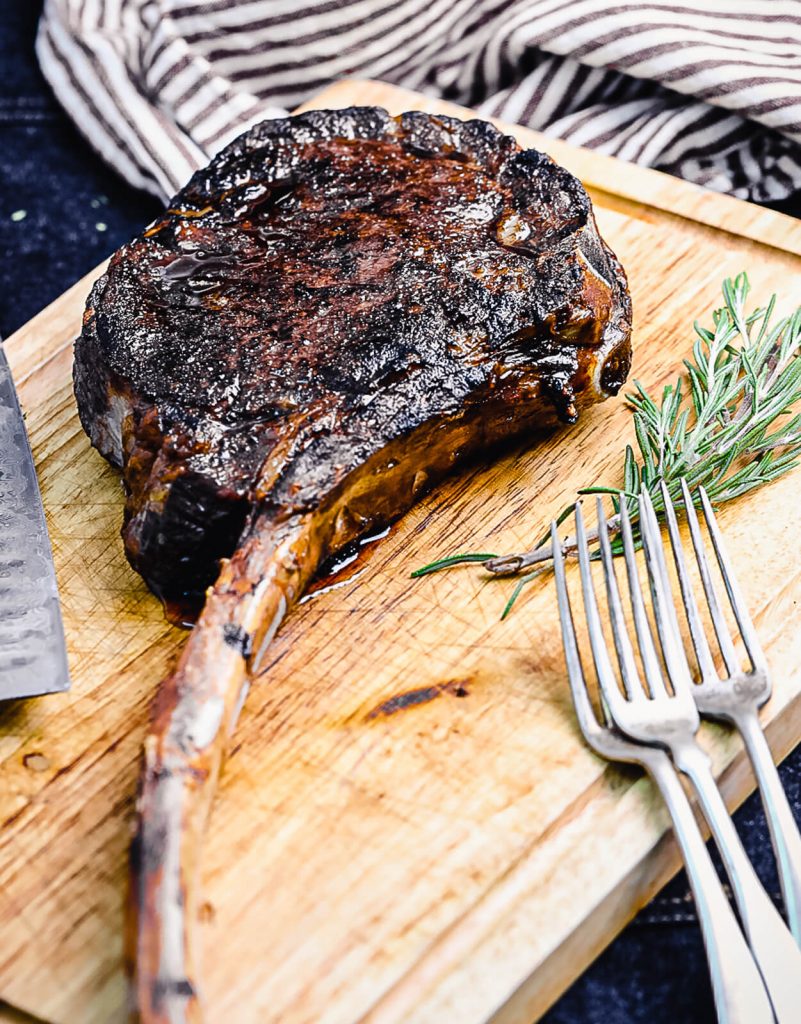
Great advice, simple and straightforward, thanks Matt.
Keep the tips coming
Such a simple recipe and our steak turned out fantastic!!
Thanks for sharing, I’m so glad it worked out for you!
-M
This is the jackpot, used it like 6-7 times now! Bam!
That’s awesome, glad it’s working out for you!
-M
I have a 6.6 lb tomahawk that I’ll be cooking for my husband’s 70th birthday. Any thoughts on how long this will take on a gas grill at 225?
Hi Laura, congrats on the birthday for your husbands birthday. For a steak that size, you’re looking at around 2 hours. Highly suggest a reliable leave-in thermometer for this! Good luck!